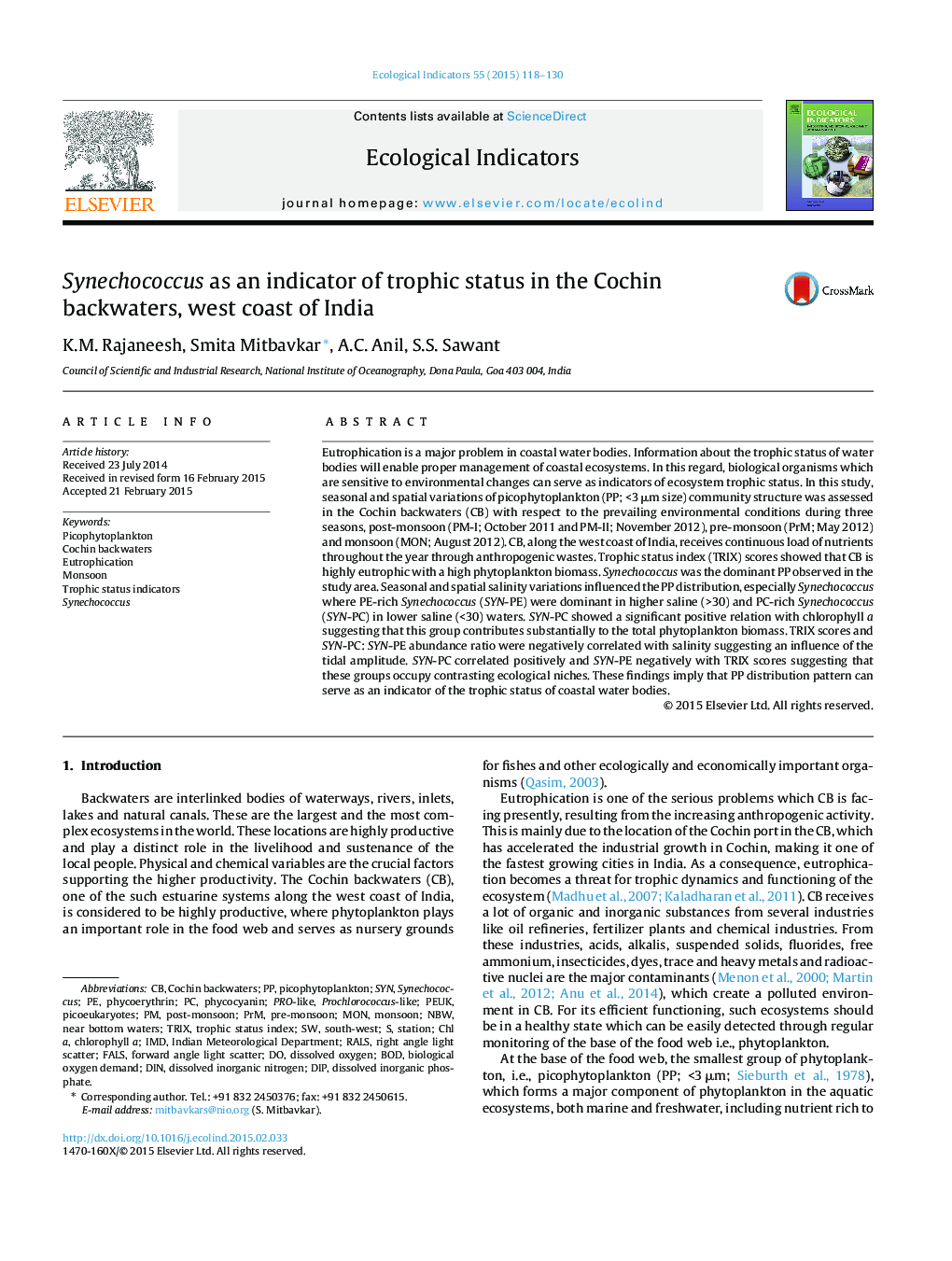| Article ID | Journal | Published Year | Pages | File Type |
|---|---|---|---|---|
| 6294390 | Ecological Indicators | 2015 | 13 Pages |
Abstract
Eutrophication is a major problem in coastal water bodies. Information about the trophic status of water bodies will enable proper management of coastal ecosystems. In this regard, biological organisms which are sensitive to environmental changes can serve as indicators of ecosystem trophic status. In this study, seasonal and spatial variations of picophytoplankton (PP; <3 μm size) community structure was assessed in the Cochin backwaters (CB) with respect to the prevailing environmental conditions during three seasons, post-monsoon (PM-I; October 2011 and PM-II; November 2012), pre-monsoon (PrM; May 2012) and monsoon (MON; August 2012). CB, along the west coast of India, receives continuous load of nutrients throughout the year through anthropogenic wastes. Trophic status index (TRIX) scores showed that CB is highly eutrophic with a high phytoplankton biomass. Synechococcus was the dominant PP observed in the study area. Seasonal and spatial salinity variations influenced the PP distribution, especially Synechococcus where PE-rich Synechococcus (SYN-PE) were dominant in higher saline (>30) and PC-rich Synechococcus (SYN-PC) in lower saline (<30) waters. SYN-PC showed a significant positive relation with chlorophyll a suggesting that this group contributes substantially to the total phytoplankton biomass. TRIX scores and SYN-PC: SYN-PE abundance ratio were negatively correlated with salinity suggesting an influence of the tidal amplitude. SYN-PC correlated positively and SYN-PE negatively with TRIX scores suggesting that these groups occupy contrasting ecological niches. These findings imply that PP distribution pattern can serve as an indicator of the trophic status of coastal water bodies.
Keywords
Related Topics
Life Sciences
Agricultural and Biological Sciences
Ecology, Evolution, Behavior and Systematics
Authors
K.M. Rajaneesh, Smita Mitbavkar, A.C. Anil, S.S. Sawant,
